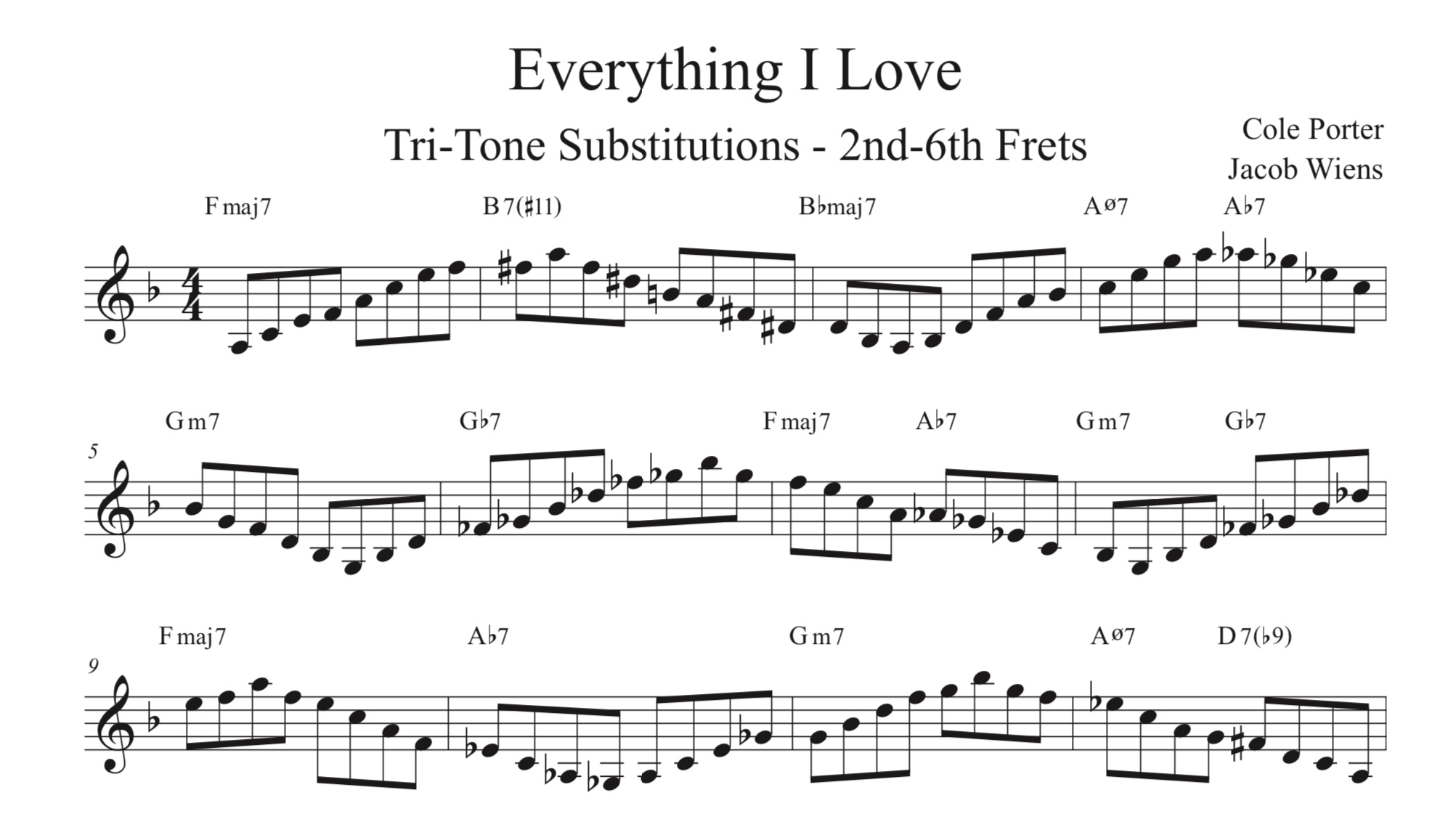Improvisation XII - "Everything Happens to Me" Part 3
This is the last exercise in a series of improvisation exercises based on the song “Everything Happens to Me” and focusing on tritone substitutions. Just like last month, the fret range is preserved but the key is changed—this time to Ab major. In this arrangement, there are tritone substitutions wherever a dominant chord would resolve to its associated tonic.
The rules of this arpeggio exercise are:
Arpeggiate the chords of a song in 8th notes within a five-fret range of the guitar.
Starting on the lowest available chord tone in that range (in this case, Db, the third of a Bb minor 7 chord) and arpeggiate upward. Change directions only when the next chord tone falls outside of the five-fret range.
While the purpose of this exercise is to improvise according to the above rule, some may find it helpful to read through a reference exercise. You can find one chorus written out here and watch me perform it here.



















